The given circuit shows an arrangement of four capacitors. A potential differnce 30V is applied across the combination. It is observed that potentials at connected between A and B differ by 5V. Also if a conducting wire is connected between A and B, electrons will flow from A to B. Of course, we have bot actually connected any wire between AandB, we have described only an if situation. Answer the following question.
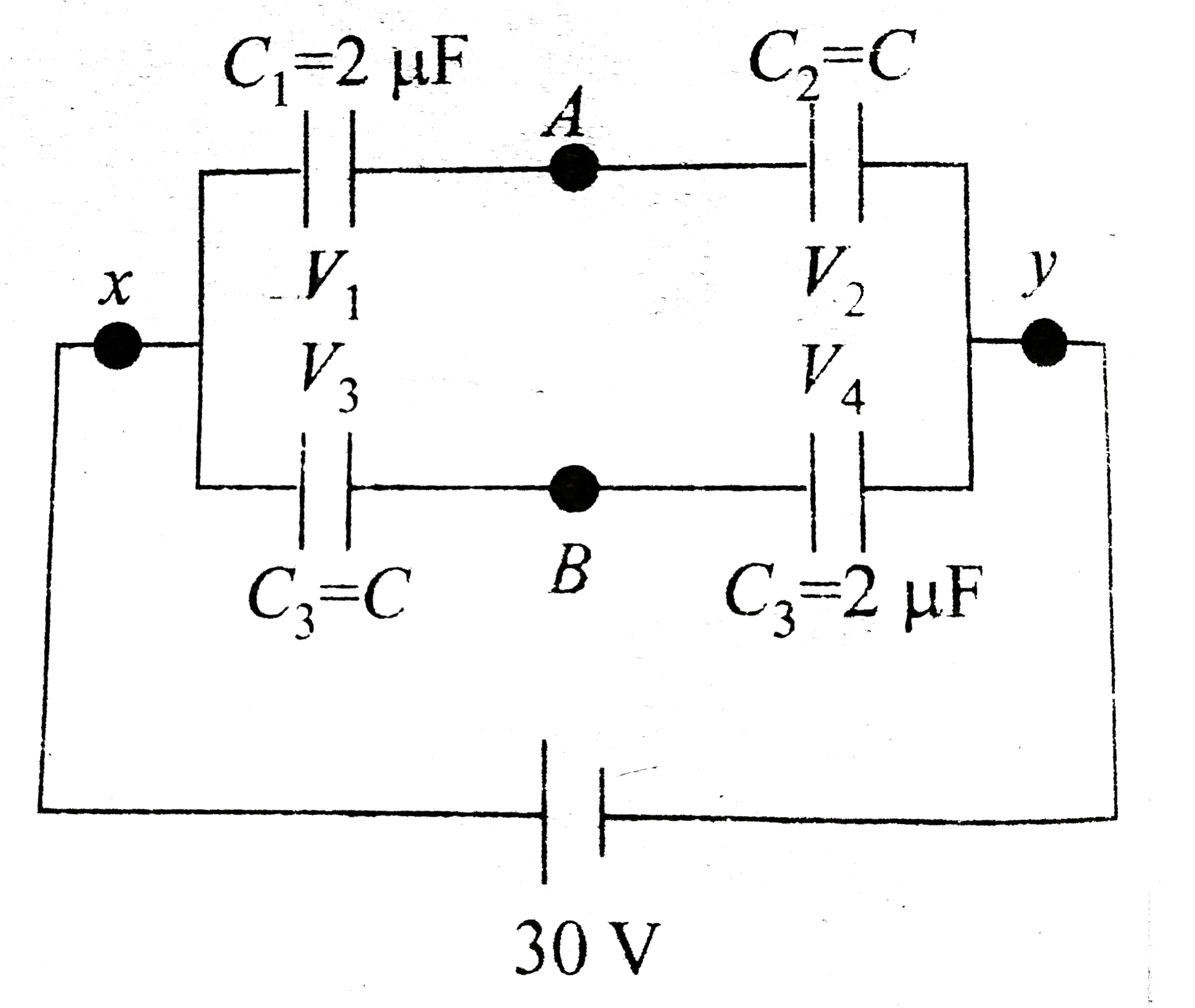 .
.
Equivalent capacitor between X and Y is.
2.34μF
1.54μF
1.22μF
0.77μF
The correct Answer is:A
Potential differnce across C4 is V4. As discussed above
V4=V1
V4=17.5V
Consider any branch say, XAY
Since C1 and C2 are in series, charge on C2 is also 35μC.
Using Q=CV for C2
C2=C=35V2=3512.5=2.8μF
Equivalent capacitance of branch XAY is the series equivalent of C3=C=2.8μF and C4=2μF i.e., 1.17μF. There branches are in parallel between X and Y, Hence equivalent capacitance between X and Y is 1.17+1.17=2.34μF.
Capacitor C5 is connected in the part of circuit between X and A either in series or parallel with C1=2μF. Let the equivalent capacitance of C1 and C5, i.e., the equivalent capacitance between X and A be C'1.
Capacitor C6 is connected between A and B Obviously, the circuit then becomes a Wheatstone bridge. Further, since equivalent capacitance between X and Y is independent of the value of C6, it implies that bridge is in the balanced condition and potentials at A and B are now equal, so that
C'1C3=C2C4 or C'12.8=2.82 (C2=2.8μF, as or determined earlier)
or C1=3.92μF
C'1 is the equivalent capacitance of C1=2μF and C5, Since C'1>C1, we can conclude that C1 and C5 are in parallel, So each individual capacitance .Hence, C1 and C5 are in parallel, so
C'1=C1+C5 or C5=C'1−C1=3.92−2=1.92μf
V'1+V2=30
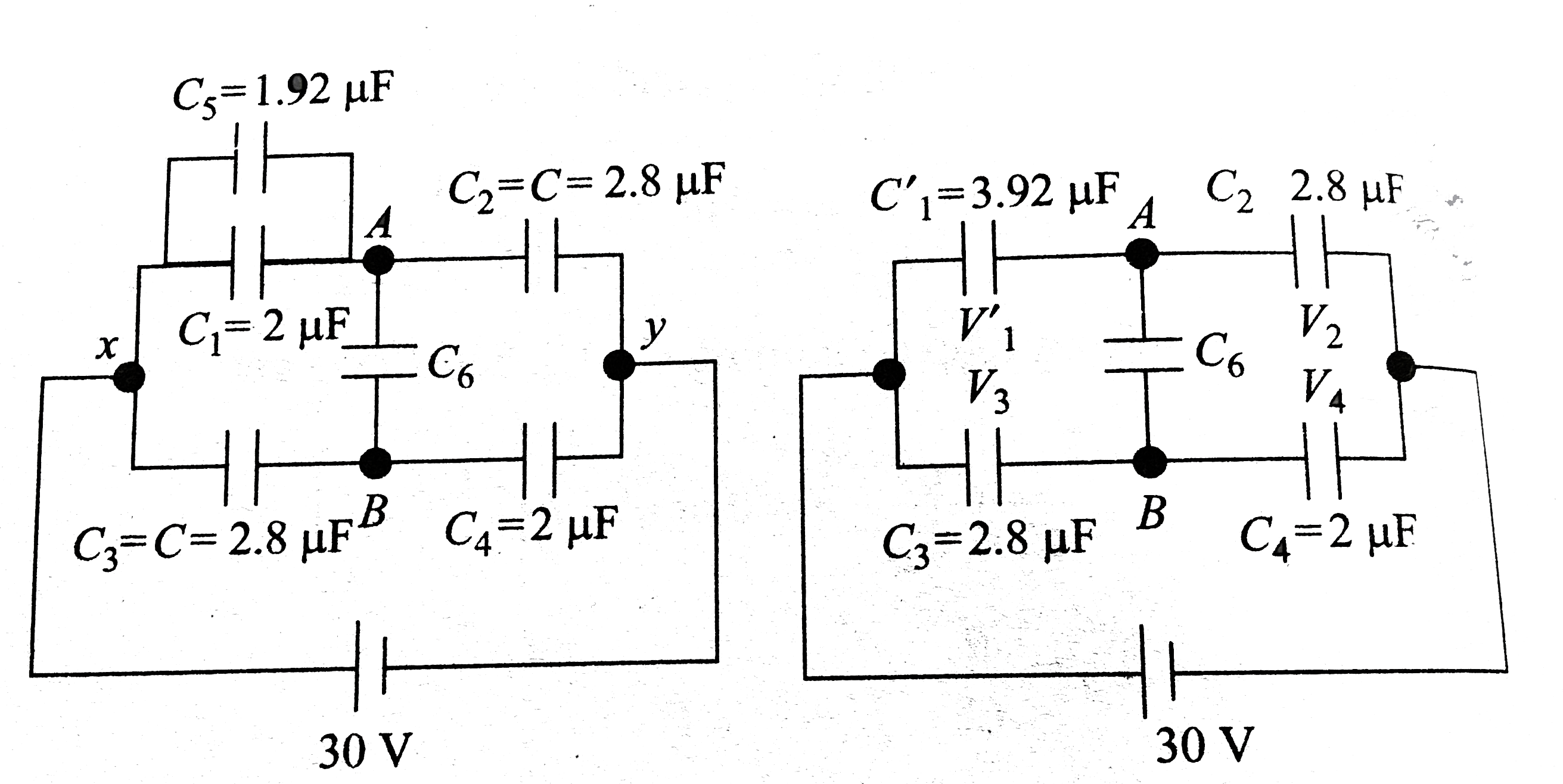 .
.
 .
.
Since the bridge is in a balanced condition, A and B at same potential and C6 has zero charge. C'1 and C2 are in series. Therfore, charge on C'1 and C2 has the same value, so that potential differnce will be in the inverse ratio of capacitance
[Q=CV or V=QChence for sameQ,V∝1C']
V'1V'2=2.83.92≈0.71 or V'1=0.71V2
From Eq. (iv), 0.71V2+V2=30 or V2=17.5V
Hence V'1=30−V2=12.5V
Since C'1, is parallel equivalet of C1 and C5, so potential differnce across each is V'1=12.5V.
Hence, charge on C5 is
C5V'1=1.92×12.5=24μC.
Topper's Solved these Questions
- CAPACITOR AND CAPACITANCEBOOK - CENGAGE PHYSICS ENGLISHCHAPTER - CAPACITOR AND CAPACITANCEEXERCISE - Integer
5 Videos
- CAPACITOR AND CAPACITANCEBOOK - CENGAGE PHYSICS ENGLISHCHAPTER - CAPACITOR AND CAPACITANCEEXERCISE - Multile Correct
11 Videos
- ATOMIC PHYSICSBOOK - CENGAGE PHYSICS ENGLISHCHAPTER - ATOMIC PHYSICSEXERCISE - ddp.4.3
15 Videos
- CENGAGE PHYSICS DPPBOOK - CENGAGE PHYSICS ENGLISHCHAPTER - CENGAGE PHYSICS DPPEXERCISE - subjective type
51 Videos
Similar Questions
The given circuit shows an arrangement of four capacitors. A potential differnce 30V is applied across the combination. It is observed that potentials at connected between A an B differ by 5V. Also if a conducting wire is connected between A and B, electrons will flow from A→B. Of course, we have bot actually connected any wire between A and B, we have described only an if situation. Answer the following question.
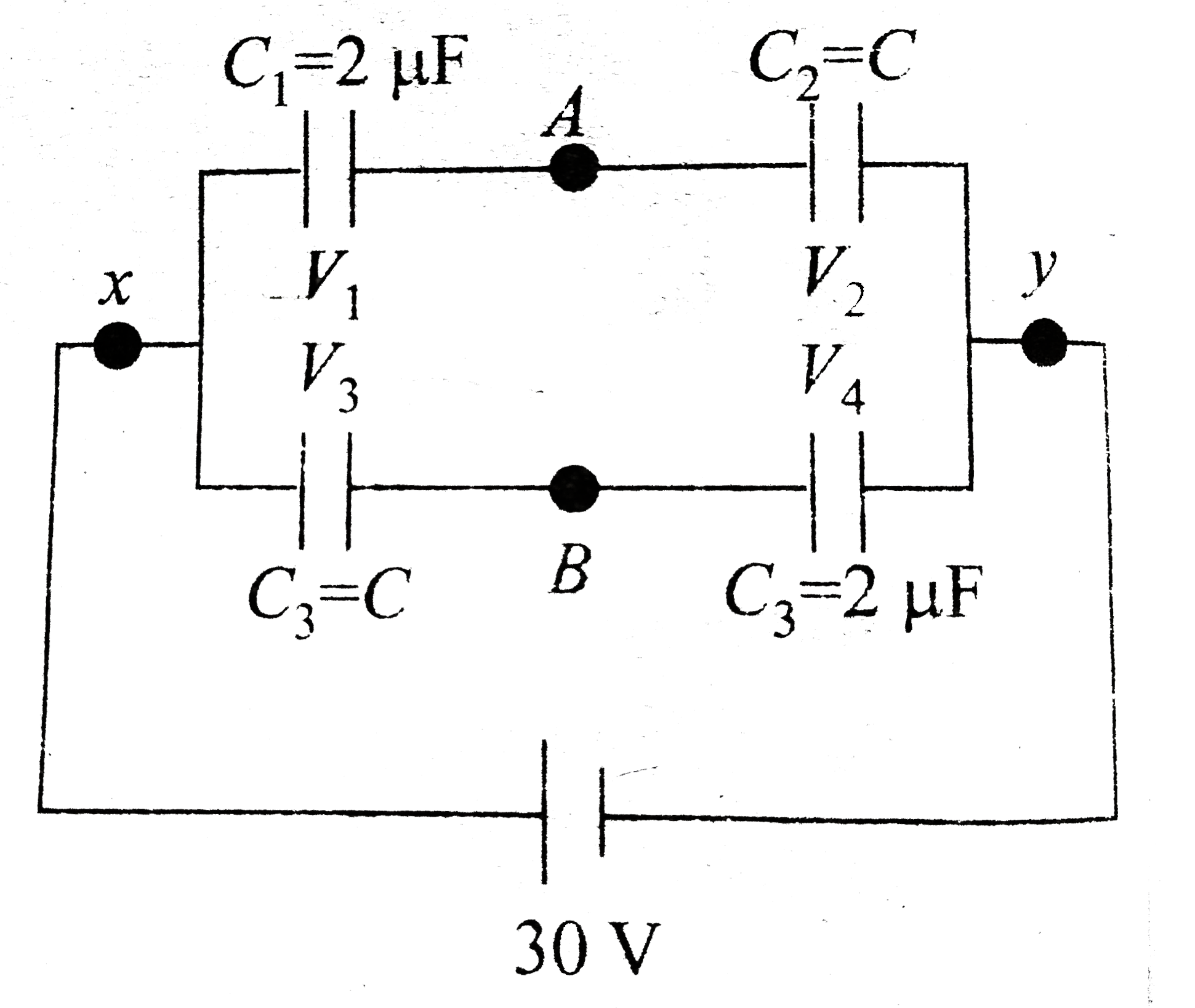 .
.
Charge on capacitor C1 is.
View SolutionThe given circuit shows an arrangement of four capacitors. A potential differnce 30V is applied across the combination. It is observed that potentials at connected between AandB differ by 5V. Also if a conducting wire is connected between AandB, electrons will flow from A to B. Of course, we have bot actually connected any wire between AandB, we have described only an if situation. Answer the following question.
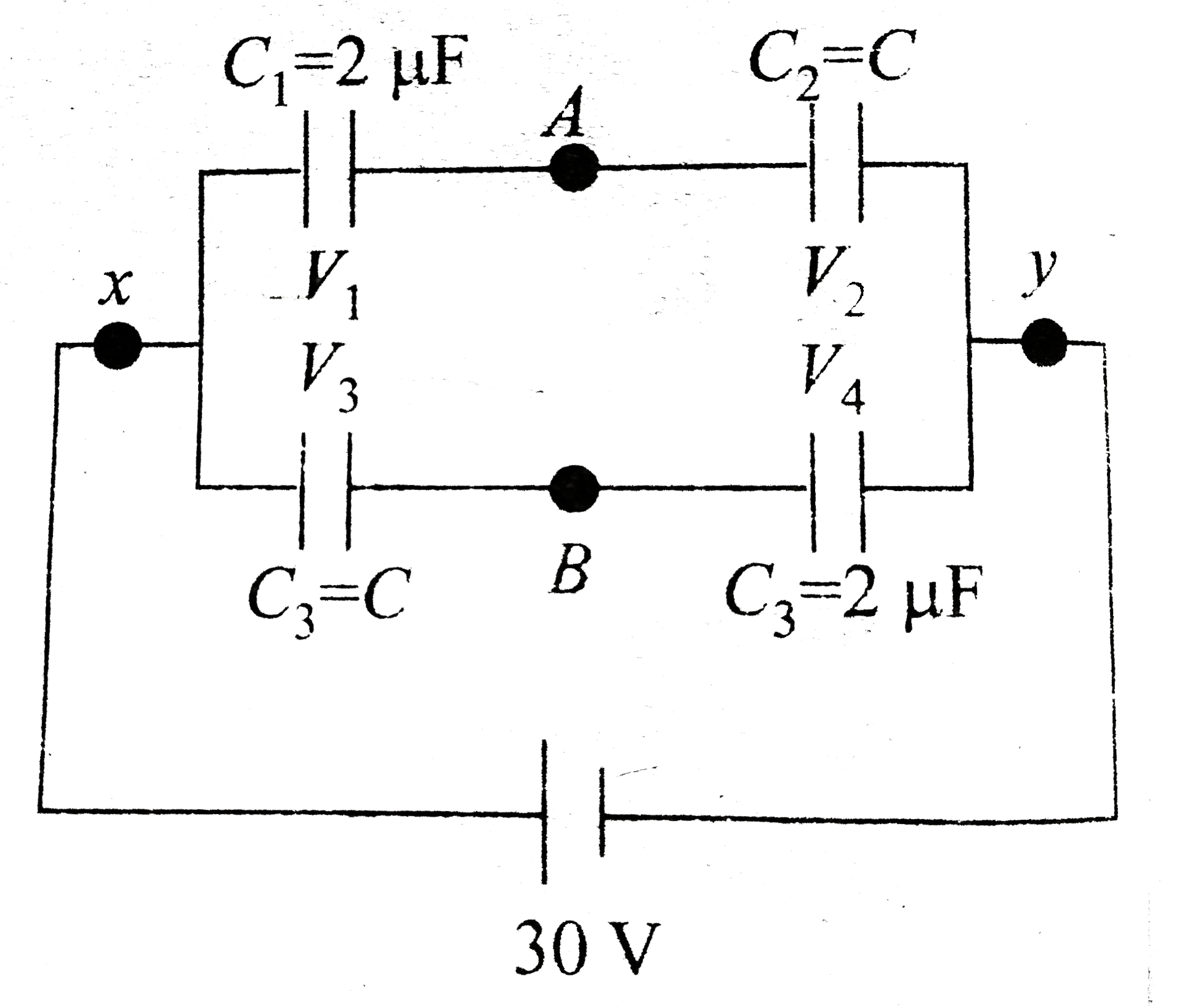 .
.
Potential differnce across C4 is.
View Solution
Knowledge Check
In the given circuit, the potential difference between A and B is
 A10 VB15 VC20 VD5V
A10 VB15 VC20 VD5V
In the circuit shown if a conducting wire is connected between points A and B, the current in this wire will :-

View SolutionIn the circuit shown if a conducting wire is connected between points A and B, the current in this wire will :-
View SolutionIf 100 volts of potential difference is applied between a and b in the circuit of , find the potential difference between candd.

View SolutionIn the given circuit, potential difference between B and A is
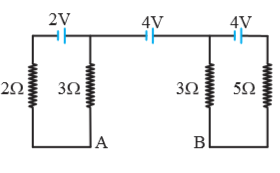
View SolutionIn the circuit shown, if a wire is connected between points A and B. How much current will flow through that wire?
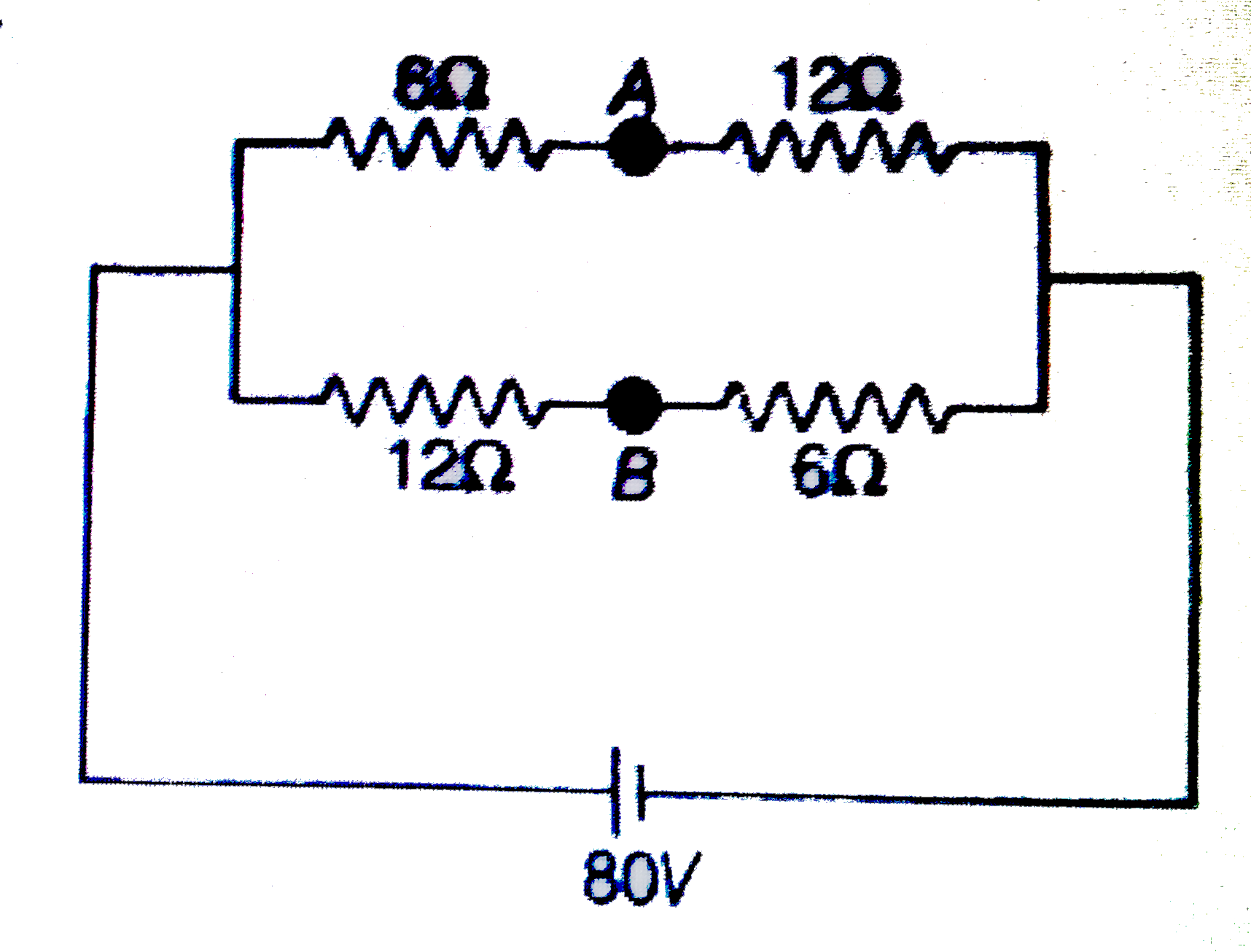
View SolutionIn given circuit , the potential difference between points A and B is
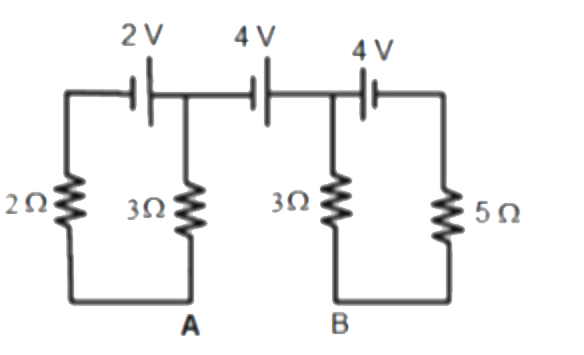
View SolutionIn the figure the potential difference across 6 ohm resistor is 48 V. Then the potential difference between A and B is
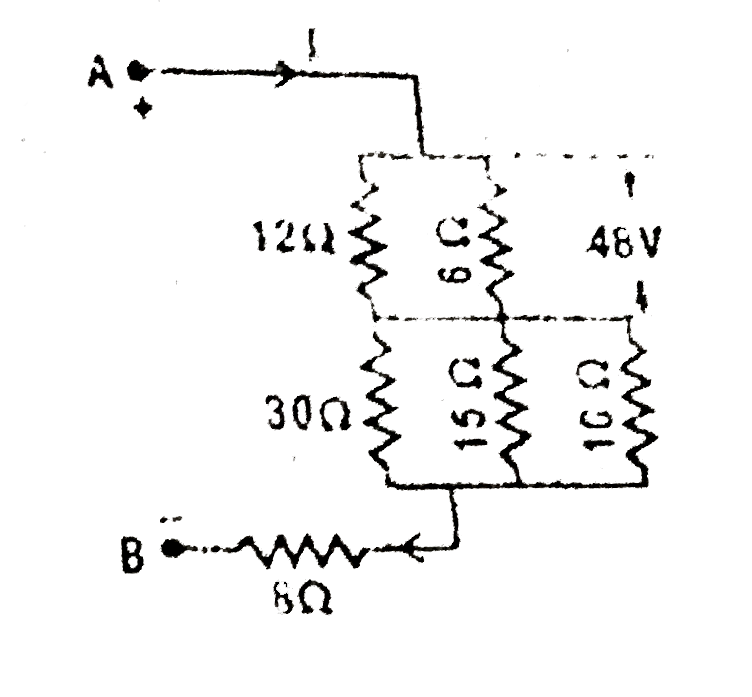
View Solution
